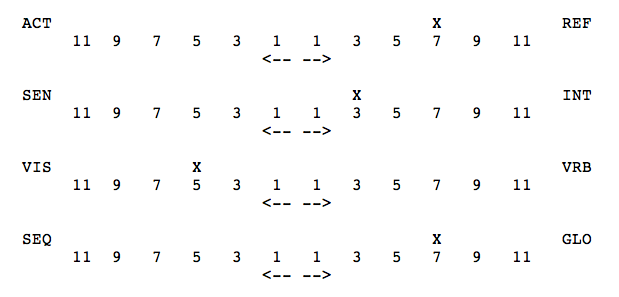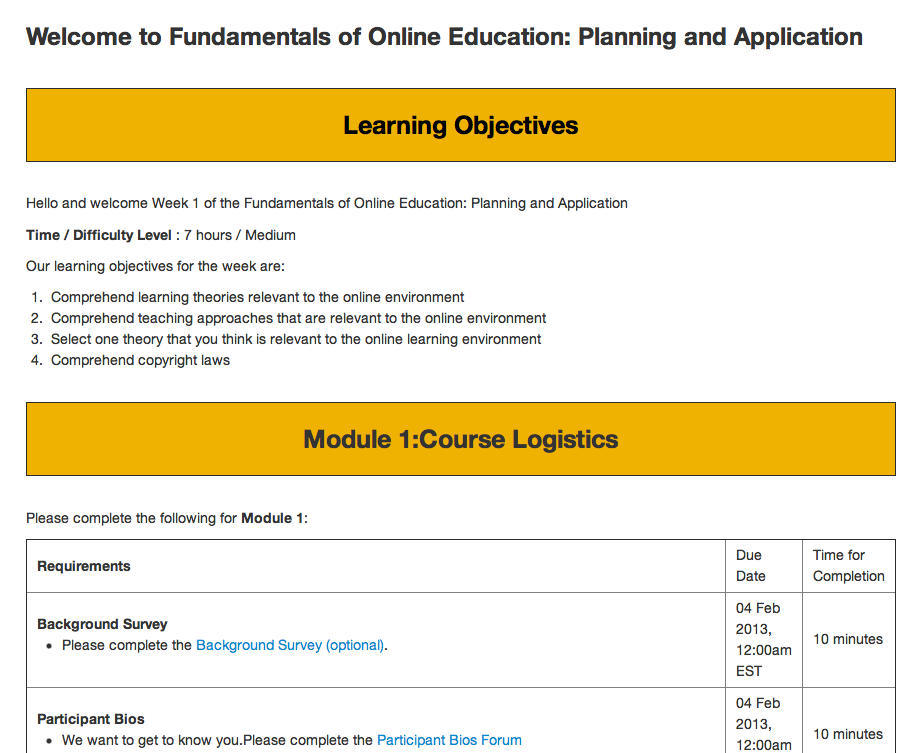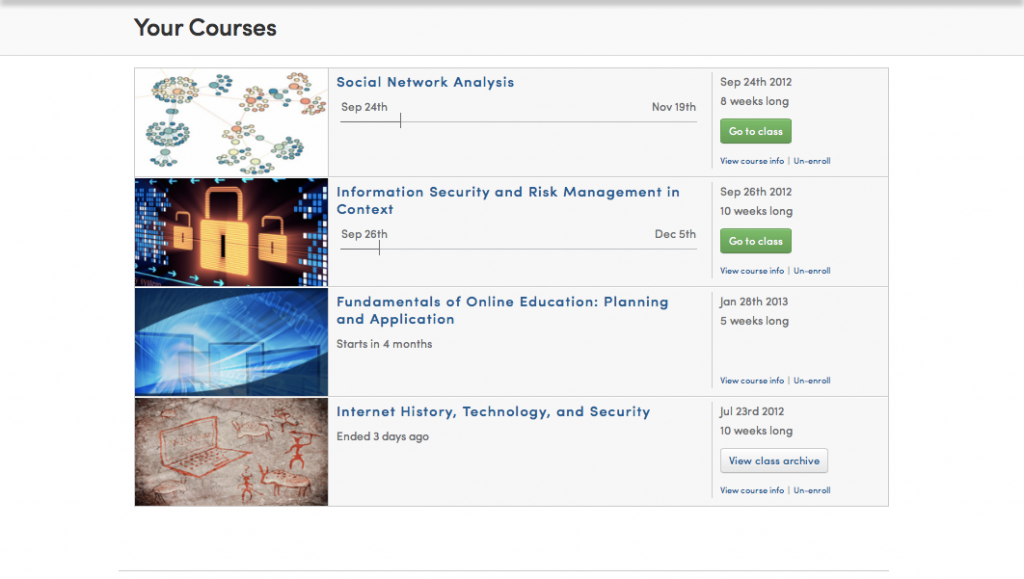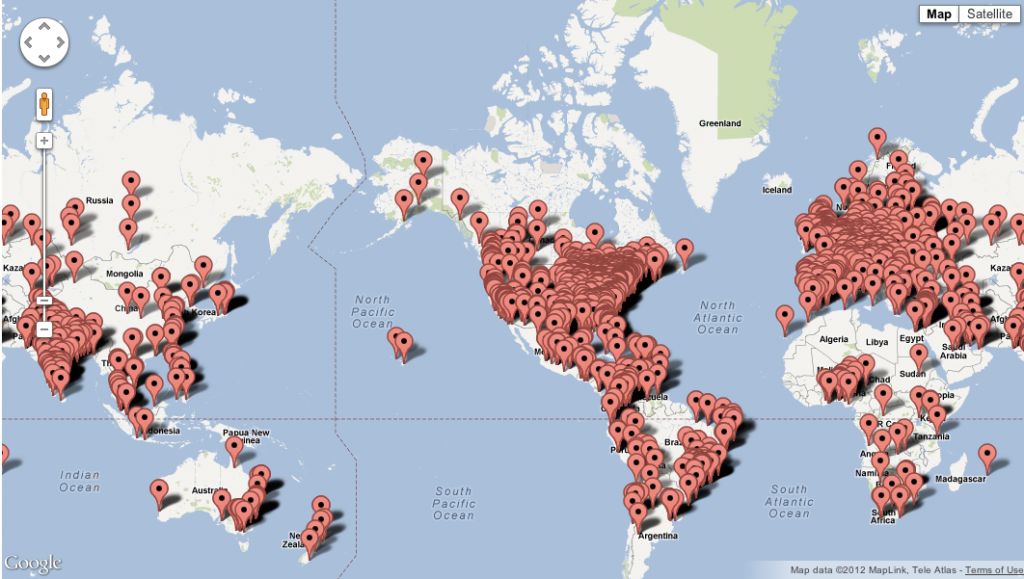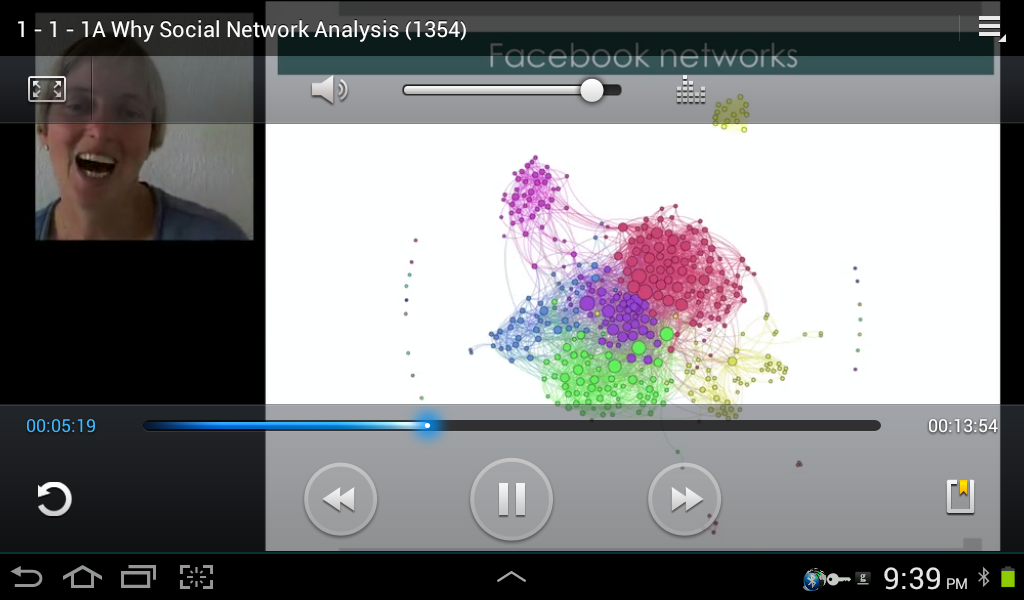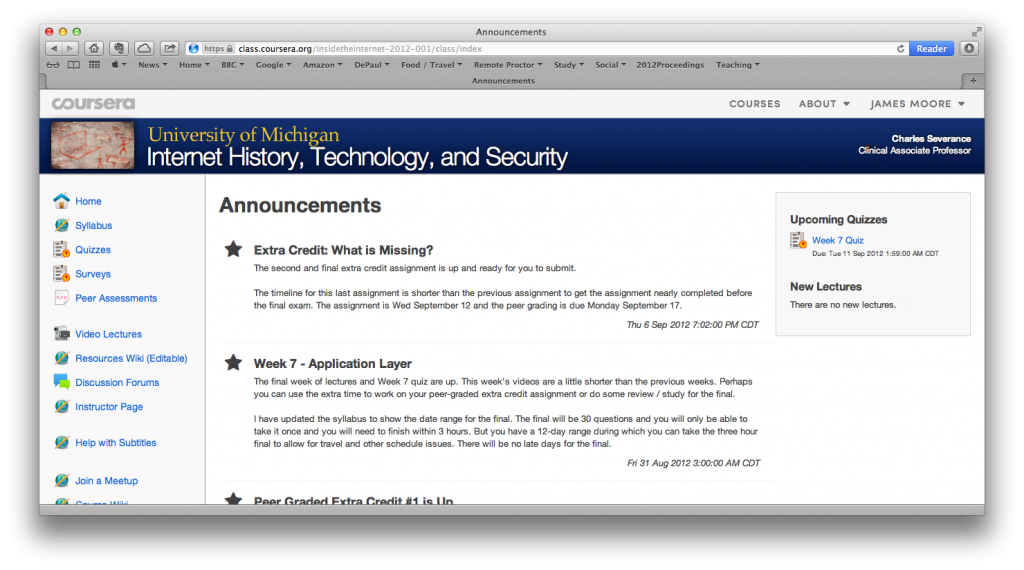Just finished reading an interesting article (but frustratingly short on details) on how the University of Maryland worked with Coursera to offer five online courses in Campus Technology.
Tag Archives: coursera
My MOOC Life (So Far): Part 4 – Course Cancelled
The Coursera MOOC I was taking (Fundamentals of Online Education) was recently cancelled. The reasons behind this (and the way in which the course was cancelled) have been instructive. I believe that this particular moment will feature heavily in future analysis of the MOOC movement.
On the 2nd February, I received this short email message from the instructor:
We want all students to have the highest quality learning experience. For this reason, we are temporarily suspending the “Fundamentals of Online Education: Planning and Application” course in order to make improvements. We apologize for any inconvenience that this may cause. We will inform you when the course will be reoffered.
Then I received this email update the next day:
Dear FOE students,
We were inspired to see the number of people who expressed an interest in seeing the class resume. There were some choices made in the initial design of the class that didn’t work out as well as we’d hoped. We are working to address these issues, and are reopening the discussion forums so that we can get feedback on how the class can be improved when it relaunches.
Thank you for your patience as we work to provide you with a great learning experience in the next version.
The FOE Course Staff
Fundamentals of Online Education: Planning and Application Course Team
I don’t believe either of those emails were honest. The messages did not accept the three major problems that this particular course had:
- The course was still under construction at time of launch.
- The group model was both poorly designed and implemented.
- There was no Quality Assurance in place before the course was offered.
The course was still under construction at time of launch
The first issue was inexcusable, particularly given the subject matter of the course. One of the fundamental tenets of good online course design is to have everything built before a course goes live. This does not preclude alterations and improvements (where justified) as a course is being taught, but this particular course still had “insert text here” content in the “About” pages. Going forward, Coursera needs to institute processes that ensure a course is ready before it launches.
The group model was both poorly designed and implemented
The second issue was interesting on several levels. The stated reason for assigning groups for students in the course was:
to make the discussions more manageable and to allow you to form networks with people in your own field and even with others not in your field. The idea was to create a world wide network of people who can help each other and to start building a world wide online learning community that will provide support and help.
However, MOOCs exhibit a significant attrition rate. In the first Coursera course I took these statistics were shared:
- Number of students signed up: 45572
- Number of students completing week 1: 1164
- Number of students who took the Final: 5401
- Number of certificates: 4595
To my mind, group membership would be significantly reduced by the end of the course (unless being part of the group successfully induced the majority of students to complete the course). I did not see this particular group model working. The instructor’s point about MOOC discussion being unmanageable is correct, and this is something that needs to be fixed, but the group method she implemented was not a viable solution.
Additionally, the methods in which students added themselves to groups were flawed. Initially this was through Google Docs, which does not scale to thousands of students (and resulted in records being deleted either inadvertently or to cause trouble). The later method was via discussion boards, in a way that was both inefficient and confusing. In neither option was there a way for students or Coursera to plan the composition of a group based upon any criteria (i.e. mixed skill-set, learning style, location, primary language, etc.). Hopefully the instructional designers and developers at Coursera will look for a method in which the course technology can automatically assign groups in an intelligent fashion. This would be an opportunity to run some very interesting and productive research.
There was no Quality Assurance in place before the course was offered.
Lastly, I did not see any indication of Quality Assurance being run in this course. If there had been a process in place that that reviewed the course before launch, then this would have caught that fact that the course was still under construction, and this should have also highlighted problems with the groups model. This is a major issue for Coursera to address. Oversight needs to be in place to demonstrate that a MOOC offers a superlative educational experience to students. The publishing industry relies on editors, proof-readers, legal review, designers, and peer assessment to ensure that what reaches the reader is a quality product. A MOOC should be have the same level of oversight as a good publishing house.
UPDATE: Interesting commentary from Slate on the “course meltdown.” Worth searching on Twitter for #foemooc
My MOOC Life (So Far): Part 3 – Fundamentals of Online Education
I started my most recent MOOC today. This was another offering from Coursera, and focused on an area that fits into my work life very well. The course (Fundamentals of Online Education: Planning and Application) had a slightly rocky start, students were meant to add themselves to groups of 21 via a Google spreadsheet, but this resulted in inadvertent deletion of groups and a crashed server. The discussion boards were later used for students to add themselves to groups. I am in “Start LL” (I think).
I began the week by penning a quick introductory post, and then searched via a couple of keywords to see if there was anyone else in the course from work or Chicago. The introductory discussions are where I think Coursera could make a few improvements – it would be nice to apply a global profile more successfully for each subsequent course, and to create a groups/friends options which would allow for students to find contacts in each new course.
My next step was to complete two learning styles questionnaires:
According to the VARK Questionnaire, I have a mild Read/Write learning preference:
- Visual: 9
- Aural: 5
- Read/Write: 14
- Kinesthetic: 8
Which suggests that I follow these strategies to study more effectively.
The results for the Index of Learning Styles Questionnaire (ILS) were as follows:
This suggests that I have largely moderate preferences for these learning styles:
- Reflective (7)
- Intuitive (3)
- Visual (5)
- Global (7)
Both these questionnaires were useful and interesting, and I think I will use them in the classes I teach. The course also provided a link to the “Are You Ready For An Online Class” page at Georgia Tech. It might be worthwhile coming up with a similar page more focussed on being in MOOC….
The course designers provided a background survey, which I completed. A couple of questions stood out for me:
Which one of the following component(s) do you think is important in an online course?
- The navigation of the course website
- The work load
- Timely feedback from the instructor
- Small group discussions
- Group Projects
- Other
Somewhat tellingly, assessment of learning was not a stated option.
If a 24 hour, 7 day a week help center staffed by qualified teaching assistants were available for this course, would you use it if you needed help?
I assume that this option would more more fully lead to a business model for Coursera.
Each Coursera course has exhibited a different personality, and the navigation for this course is very functional (but a tad ugly). The “Week 1” tab provides a table of the various requirements, due dates, and time for completion. This was a nice touch, although the introductory videos indicate that the course is fluid and subject to change.
Moving forward, I will be careful to temper my notes here and prevent the posting of anything that could be considered plagiarism or breaking the academic standards of Coursera.
My MOOC Life (So Far): Part 2
So far I have taken three MOOCs, and I am currently taking another two (and I am enrolled in a Udacity course that I believe is study at your own pace – Introduction to Computer Science CS101, which I will look at way later in the year):
- Information Security and Risk Management in Context
- Ends 5th December, 2012
- Taught via Coursera
- Social Network Analysis
- Ends 19th November, 2012
- Taught via Coursera
- Internet History, Technology, and Security
- Completed – waiting for certificate
- Taught via Coursera
- Power Searching with Google
- Completed – received certificate (image)
- Taught via Google’s Course Builder
- Instructional Ideas and Technology Tools for Online Success
- Did not complete, but downloaded/read/watched all material
- Taught via Blackboard Coursesites
My purpose in enrolling in these MOOCS has been twofold:
- To continue my education
- To investigate MOOCs
- Is there a business model?
- Do they “work?”
- What instructional design strategies are employed?
- How will they compete with traditional education?
- Is assessment possible on a large scale
- etc.
So here are some more observations…. (Part 1 can be found here)
Internet History, Technology, and Security
The instructor (Charles Severance) has been very good at communicating with students since the course has officially ended. There have been several email updates sent out to the group alerting us to the certificate status. This is good in of itself, but what is even better is that he recorded a “reflection / summary lecture” which he had planned to:
“talk about how the class went, what worked and how I would improve the class, and share some of the data about the class with you”
This is fantastic, and demonstrates what I find most powerful about the MOOCs – the way in which the large number of students combine with the open nature of the MOOC philosophy to rapidly iterate improvements (providing faculty, instructional designers, technologists, etc. are willing and prepared to make changes).
Chuck shared some data on where the students came from, which can be seen by following this link to Google Maps.
The reflection video shared some great data on the student population, but this data I found particularly interesting:
- Number of students signed up: 45572
- Number of students completing week 1: 1164
- Number of students who took the Final: 5401
- Number of certificates: 4595
Chuck then shared his thoughts on what went well, and what he would do differently. I don’t think he will mind me repeating this here given his adherance to openness and transparency:
Worked Well
- Using Twitter as the way to contact me
- Discussion tool is outstanding
- Multi-take quizzes with automorphing questions
- Lecture video format with me looking at the Cintiq
- Discussion forums and their voting
- Cognitive load from the forums to me was manageable
- Mail to the class needed to come from me
- Office hours as small focus groups to help me improve the course
Things He Would Do Differently
- Better Welcome Lecture
- How to use the software lecture from Coursera (i.e. like resources)
- How and when to use the “flag” icon
- How do Late Days work?????
- Describe community communication guidelines – when we will delete a thread
- Delete threads more often
- Faster lecture translating
- All writing assignments are extra credit (because this is an intro class)
- I still don’t get reputation points and how I should use them
- More student editable spaces
- Better way to identify natural leaders in the community and give them ways to communicate broadly other than “+1 votes” in the discussion
- Split lectures at week boundaries (oops)
- Add a “breath/pause” during lecture recording to allow me to later decide where to put a question.
- Come up with an extensive preview so people don’t register just to peek
- Tell late entrants that after week 3 they will not likely get a certificate – perhaps even close registration – you can go on a wait list and see the materials but not take the quizzes
- I would like to come up with a selfpaced version – but the software would need to be different
This really gets to why the course was so successful – a professor who felt passionate about making improvements to the course as it was being taught, and then applying longer-term changes for the future. He also was extremely approachable using Twitter, the discussion boards, and traveling office hours to communicate.
I was lucky enough to participate in the Chicago office hours, and found this to give me more of a connection to the course.
It gets even better – Chuck is intending to build a sequence of MOOC courses that build upon each other, and he is personally signing all certificates sent to him.
It has been a definite pleasure taking the course.
Social Network Analysis
This looks to be the more “hands-on” of the various MOOCs, with applications to install and data to process. I have some assignments to complete and need to dig in deeper. I am happy with the way the course is going, and know that this will stretch me.
Information Security and Risk Management in Context
There has been an undercurrent (and sometimes more than that) of dissatisfaction in the discussion boards the past week. The areas that several of my fellow students feel less than happy are:
- Announcements that the videos cannot be downloaded.
- Reuse of older classroom videos.
- Promotion of the certificate programs ($1,025 for noncredit or $2,055 for graduate credit). Here the wording and frequency of this information seems to have rubbed people the wrong way.
- A feeling that the course was rushed to meet a deadline, rather than waiting to release something more polished later in the year.
This is the first Coursera course where textbooks have been required/recommended. What I think would have worked better here would have been:
- Selecting entirely digital required reading (rather than having to find and order a physical book).
- Providing the required/recommended reading information earlier in the course.
However, I am finding the content in this course particularly relevant to my interests, and look forward to future weeks.
SNA MOOC: Day 2
After posting (yesterday) about the Coursera Social Network Analysis MOOC I received a form email that impressed me. It looks like the Coursera staff are monitoring the Web for conversation about this particular MOOC. The email was well crafted and balanced, conveying respect for those who wanted to blog about the course but reminding students of the honour code.
To summarize the email:
- Posting solutions to quiz problems is not allowed.
- Sharing experiences, ideas, and examples that go beyond the assignments is allowed.
- Sharing/discussing assignments after the deadline is allowed, but this should not take place publicly (i.e. on a blog)
The email concluded with a reminder of the Coursera honor code:
- My answers to homework, quizzes and exams will be my own work (except for assignments that explicitly permit collaboration).
- I will not make solutions to homework, quizzes or exams available to anyone else. This includes both solutions written by me, as well as any official solutions provided by the course staff.
- I will not engage in any other activities that will dishonestly improve my results or dishonestly improve/hurt the results of others.
I was impressed that Coursera is actively communicating and reinforcing the honor code. I have noticed that for other/older Coursera courses that some students have posted old quiz questions and possible solutions. Hopefully the reminder emails will limit the sharing of assignment information.
I am watching the Week 1 videos as I travel too and from work. Being able to download the videos to a tablet, and then watching them on the El has been very helpful. In my last course the instructor positioned the camera in such a way to capture footage of him working with a Wacom Cintiq display and splitscreen the results with Camtasia (on the Mac). This instructor is using a splitscreen that mixes PowerPoint slides with a talking head – the downside of this is sometimes the experience is akin to the “uncanny valley,” the instructors eyes and attention is directed away from the camera (towards off-camera notes) and the communication does not work as well. But when you get the “direct eye contact” the presentation comes across particularly well, and the instructors passion for the subject makes the topic come alive.
I definitely get the opinion that the Coursera MOOCs (and maybe all MOOC in general) are faculty-driven. The faculty are doing this because they love the topics and the idea of open education.
Coursea Course Statistics
I am in the final weeks of a Cousera course (Internet History, Technology, and Security), and the instructor has kindly shared the demographic data provided (via a survey) for the students in the MOOC. As Charles Severance says:
Of course the caveat is that it is not scientific, it is partial, incomplete, your results may vary, void where prohibited, etc etc etc. It is anecdotal at best but certainly interesting. This is not all the data but the other items like country need some coding as they were fill-in-the-blank and folks filled it in a lot of ways.
Is this your first online class?
- 1611 Yes
- 1942 No
Is this your first large, free, online course (i.e. MOOC)?
- 2232 Yes
- 1319 No
Which best describes your motivation for taking this class? Check all that apply:
- 2677 General interest in the topic
- 2215 Extending current knowledge of the topic
- 442 Supplement other college/university classes courses
- 203 Decide if I want to take college/university classes on the topic
- 1539 Professional development
- 1437 Interest in how these courses are taught
Are you currently a student in a school or college?
- 972 Yes
- 2572 No
What is your highest level of education?
- 81 Some high school
- 298 High school
- 363 Some college
- 207 Associate’s degree (2 years of college)
- 1234 Bachelor’s degree (BA/BS, 4 years of college)
- 1016 Master’s degree
- 186 Doctoral degree
- 174 Professional degree (MD, JD)
Are you currently a teacher?
- 451 Yes
- 3088 No
If you are a teacher, are you thinking about reusing some of the material in this course for your own course?
- 510 Yes
- 1496 No
What is your gender?
- 2387 Male
- 1121 Female
- 31 Decline to state
What is your age?
- 75 I prefer not to answer
- 757 18-24
- 1189 25-34
- 621 35-44
- 491 45-54
- 420 55+
